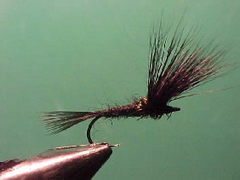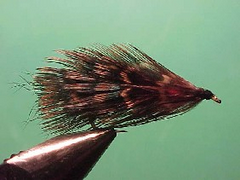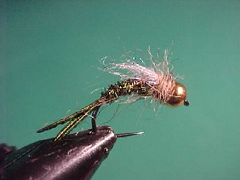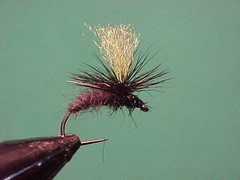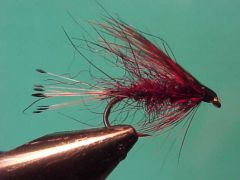Stimulator variant
Whilst not tied to imitate any particular insect this down wing style of fly can be tied with your favorite materials and in your favorite colours to imitate a range of insects. It is a good prospecting fly when nothing appears to be happening. In larger sizes it can be twitched or fished dead drift to imitate a hopper, cicada or other terrestrial insect that has found itself in the water or in smaller sizes can be danced across the surface to imitate a caddis fly.


